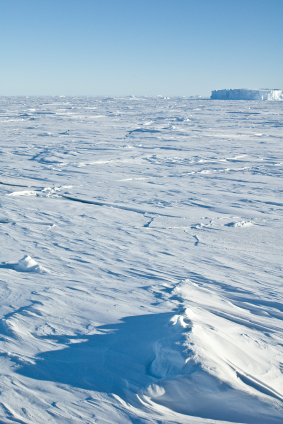 We return to discussions around innovation with a guest post by Robert F. Brands. Robert was the founder of InnovationCoach.com, and the author of “Robert’s Rules of Innovation”: A 10-Step Program for Corporate Survival, with Martin Kleinman published by Wiley, 2010.
We return to discussions around innovation with a guest post by Robert F. Brands. Robert was the founder of InnovationCoach.com, and the author of “Robert’s Rules of Innovation”: A 10-Step Program for Corporate Survival, with Martin Kleinman published by Wiley, 2010.
One hundred years ago, two men set out on a Race to the South Pole.
Both Englishman Robert Falcon Scott and Norwegian Roald Amundsen were experienced explorers. They knew the polar conditions of Antarctica. They knew with reward came inherent risk.
Their shared tale is one about best practices versus innovation. One relied on mere “innovation” to master a frozen continent. The other innovated best practices he’d learned through years of intensive research.
One traveled to the South Pole, planted his nation’s flag as the first, and returned safely. The other reached the pole, saw he’d been beaten, and paid the ultimate price for his poorly planned expedition.
Amundsen blended modern innovation with time-tested best practices common among people who lived in extremes. Scott relied mostly on what he thought was innovation, but in fact was a poor reinvention of the wheel. This is an important lesson for any business, venture, man or mission.
Amundsen meticulously researched Antarctica. He spent a year living with Eskimos. He knew Arctic conditions, and modeled his outerwear selection on the furs common among the people. He knew that dogs and sleds were the best means of travel atop deep snow and ice. But Amundsen improved upon modern sleds by making them longer and narrower so as to spread their weight across a greater length. To pull them, he brought 53 dogs.
Scott rushed his Terra Nova expedition’s planning. He thought 19 ponies, 33 dogs ( as back up) and three motor sledges would suffice. He and his crew of 24 dressed in woolen clothing. His was a rushed expedition.
Amundsen also knew the region. From prior exploration, he knew that the Bay of Wales, or Ross Ice Shelf, hadn’t moved in 80 years. It would provide the best protection for his ship and base camp from unrelenting winds. He built and provisioned three larger base camps – so as not to have to carry food with them the entire journey and markers with food along the way.
Amundsen’s camps and ample provisions kept his team and remaining dogs alive, Scott endured a different fate. His wools absorbed perspiration, which froze in the sub-zero temperatures. His horses’ hooves broke through snow and thin ice; the animals didn’t have the stamina for such conditions. Weak and starving, they were shot en route.
In the end, Amundsen made it to the South Pole and returned to his base camp. In January, 1912, Scott’s team arrived at the South Pole – one month after Amundsen. (See “Race for the South Pole” by Roland Huntford for a side by side unedited Journal entries)
Having planned for horses to make the return trip in short order, Scott and his men were insufficiently provisioned to make the return trek by foot. Ultimately, they perished in the white-out of a driving blizzard within miles from the final base camp.
What Amundsen knew – and Scott paid the ultimate price for not realizing – is that following well-modeled best practices are an imperative of smart innovation. Once best practices are learned, you then can innovate atop that. In any venture – whether a new business or exploration of seemingly uncharted terrain – innovation is key. Innovation drives growth and becomes the foundation for success. But it’s vital that innovation is laid atop best practices.
In the end, Roald Amundsen’s name is planted – along with Norway’s flag – as the innovating pioneer who first reached the South Pole. Robert Scott’s name, sadly, stands as an abject lesson in how haste and poor planning can prove fatal to man and mission alike.
How are you going to use innovation best practices to “win your race” in the business world. If you’re standing still, you’re falling behind. Jump start your polymer innovation by visiting InnoCentrix, LLC.

Leave a Reply